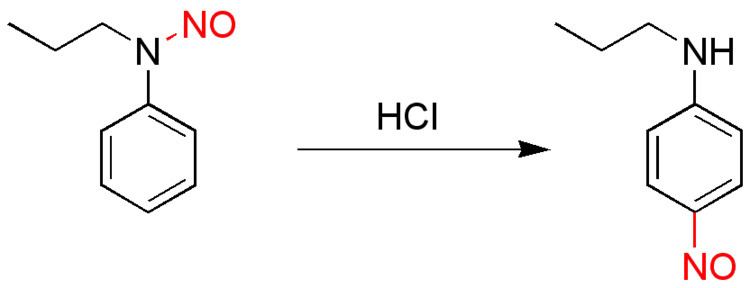Reaction type Rearrangement reaction | ||
 | ||
Named after Otto FischerEduard Hepp | ||
The Fischer–Hepp rearrangement is a rearrangement reaction in which an aromatic N-nitroso or nitrosamine converts to a carbon nitroso compound:
This organic reaction was first described by the German chemist Otto Philipp Fischer (1852–1932 ) and Eduard Hepp (June 11, 1851 – June 18, 1917) in 1886, and is of importance because para-NO secondary anilines cannot be prepared in a direct reaction.
The rearrangement reaction takes place by reacting the nitrosamine precursor with hydrochloric acid. The chemical yield is generally good under these conditions, but often much poorer if a different acid is used. The exact reaction mechanism is unknown but there is evidence suggesting an intramolecular reaction.
References
Fischer–Hepp rearrangement Wikipedia(Text) CC BY-SA
